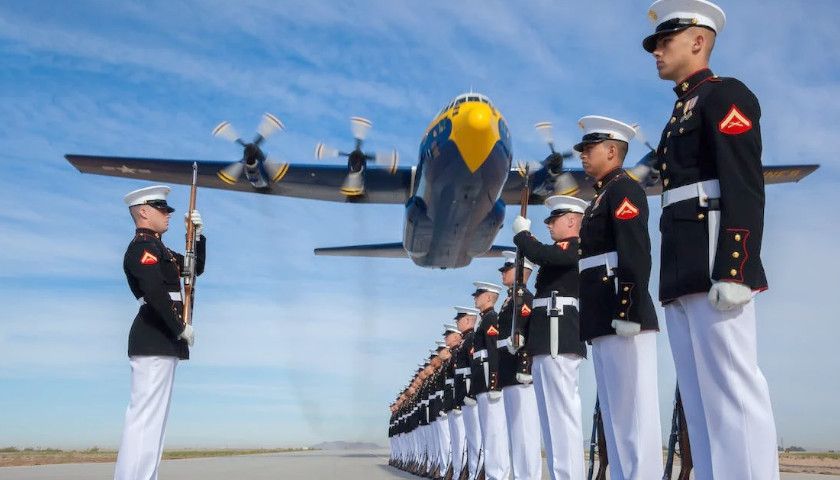by Brent Ramsey
The Navy is all in for DEI. At the Navy website if one clicks on “who we are,” one of the first things that shows up is “diversity and equity.” It must be important to show up so prominently.
The Navy Diversity and Equity website page says: “I AM A SAILOR. WE ARE A TEAM. THIS IS OUR NAVY.”
“When Sailors feel included, respected and empowered, they will be more ready to win wars, deter aggression and maintain freedom of the seas.” -ADM Mike Gilday, Chief of Naval Operations.
The Navy offers no evidence to support the CNO’s statement. It is not clear how the statement actually relates to diversity or equity. It does mention feeling “included” a form of “inclusion” but in a vague sort of way. In my 34 years in uniform, I don’t recall at any time being asked my feelings. Must be a new thing. I doubt the People’s Republic of China military leaders ask how their people are feeling? The Navy I served in stressed toughness, stamina, perseverance, physical fitness, strength, courage, honor, and commitment. My feelings were secondary and that was well understood by me and my shipmates. I have been literally eyeball to eyeball with the Soviets in the North Atlantic tracking a Yankee class submarine. Rest assured that former enemy had our full attention and our crew devoted no time to feelings. I have no doubt our current adversaries are just as potentially dangerous to our way of life as was the former Soviet Union. The Navy ought to focus on our real threats instead of touchy-feelie nonsense like sailors’ feelings. The Navy is a combat force whose job it is to break things and kill people when and where called upon to do so. Those whose personality or psyche demand constant attention to “feelings” probably ought to find something else to do.
Let’s look at diversity
How diverse should the Navy be? It doesn’t say. The fact is, the Navy is already about as diverse as any institution anywhere. The 2021 DOD report on demographics for Navy shows:
|
American Indian/ Alaska Native |
Asian |
Black |
Native Hawaiian/ Pacific Islander |
Multiracial | Unknown | White | |
| Enlisted |
2% |
6% |
19.4% |
1.3% |
6.7% |
4.4% |
60.3% |
| Officer |
1.1% |
5.9% |
7.9% |
0.5% |
5.1% |
3.3% |
76.2% |
| USA (2020) [1] |
1.1% |
6 |
12.4% |
0.2% |
8.4% |
— |
61.2% |
[1] Improved Race, Ethnicity Measures Show U.S. is More Multiracial (census.gov)
DOD’s 2021 demographics shows the Navy has 114,100 enlisted personnel and 13,361 officers that identify as a minority. The Navy is already diverse. 37% of the Navy is from a measured racial demographic group leaving 63% that identify as white which matches the percent reported nationally in the 2020 Census. That is more diversity than the national average. An anomaly hidden from view is the Hispanic segment of the military. You will note that there is no category for Hispanic in the table above. Actually, 17.7% of the active DOD force is Hispanic but you would never know that from the figures above because it is not reported. The US census does not count Hispanics as a minority. Instead, they are considered a different ethnic group. According to Pew Research Center data published in 2021, 58% of
Hispanics consider themselves to be white with the remainder identifying as some other color.[1] This unique accounting obfuscates the fact that the US military is even more diverse than appears to the naked eye when viewing DOD’s reports of racial groups. In fact, over 350,000 Hispanics serve in the military and add considerably to the diversity of the total force.
Other than a slight underrepresentation of black officers, the Navy is at or exceeds the national demographic of racial diversity. This begs the question, what is all the fuss about diversity? The Navy is diverse! There is no need to become even more diverse than the Navy already is. Millions of dollars and precious time are being devoted to a problem that is outside of the Navy’s ability to control. Nay, you say…. what about the shortfall in black officers? What about it? The Navy is devoting a lot of time and effort into trying to recruit blacks to join the Navy to become officers, but the gap remains. One must ask the question, “Why?” It is not because of discrimination because there are already thousands of black officers so there is obviously no barrier to blacks becoming officers. What is lacking is blacks who want to become naval officers. No amount of incentives or handwringing over a slight under-representation of blacks in the naval officer ranks is going to change a situation that obviously has other causes. Even the small shortfall is actually not the Navy’s fault as is brilliantly and eloquently analyzed and explained in detail by CDR Phil Keuhlen in Task Force One Navy Final Report: “The Emperor’s New Clothes” Redux. According to government graduation data there are more than 200,000 black college graduates each year. The problem is that very few of these qualified people have an interest in serving in the Navy. We ought to be curious about why. It is not because of discrimination as DOD’s own internal reports document that fewer than 2% of the 3.4 million that serve in DOD consider racism to be a problem.
Let’s look at equity
The Navy DEI webpage goes on to say “Putting on a uniform doesn’t mean sacrificing who you are. America’s Navy values diversity, equality, and inclusivity — striving to build a community of service members who accurately reflect the rich makeup of our country. Our belief is that with hard work and determination, anyone, from anywhere, has the power to be successful in the Navy.” The Navy uses the word “equity” earlier twice and then in the next paragraph, the word “equality” is used. Which is it? These two things are not the same. Equity means equal outcomes regardless of merit. Equity is a term associated with social justice advocates who want equal outcomes for everyone regardless of merit. Is the Navy really advocating equal outcomes? How does that even work in a military organization with rigid technical requirements that dictate practices for safety reasons and for warfighting effectiveness? Military organizations are rigid, structured top-down organizations whose fixed chains of commands and methods demand uniformity, strict discipline, and consistency in order to function with any kind of efficiency. Adopting equity in a military chain of command is deadly and dangerous and will get people killed. Equality is equal opportunity based on merit, which is and has been the law of the land for a long time. Equality should be the Navy’s mantra, not equity. The Navy’s use of both terms may confuse those who visit their website? Is the Navy using both terms to conflate the two words into meaning the same thing in order to stimulate interest in the Navy?
Let’s look at inclusion
What does that even mean? In one section “putting on a uniform” is the first thing said. The word “uniform” is telling! It absolutely proves the Navy strives for uniformity…that’s why you wear a uniform. Everything top to bottom in the Navy is about uniformity. Ships and aircraft are built to uniform specifications. The way things are done is based on time-tested uniform best practices. Individuality is not allowed because that leads to bad outcomes and people dying. Putting on the uniform is absolutely about giving up your individuality while that uniform is on. You absolutely must sacrifice who you are to join the Navy most of the time. On duty you must conform to the Navy’s uniform standards for dress, behavior, operational excellence and a thousand other things. When you are off duty, then you have time to be yourself. While on duty, you belong to the Navy, you are included by wearing a common uniform, the same one at the same time as everyone else does. When you get up in the morning, you look at the Plan of the Day and it tells you what the uniform of the day is. How inclusive is that? We are all exactly on the same page and the uniform reminds you every day that you are part of something bigger, something important. What does the use of the word “inclusion” imply? Are there some fields in the Navy that only white people have? Of course not. The Navy’s use of the word is purely political, and politics should have no place in the Navy. It is used to show that the Navy has gotten with the program and is using the same language as the larger society and as desired or even dictated by the political left. But, how does that make for a better Navy….using politically charged terminology? It doesn’t! It has no place in the Navy and only serves to introduce doubt and dissension and make the Navy a less effective force. A cursory search reveals the popular origin of the use of the word in today’s parlance. Where you find the term used is in colleges and universities where the political philosophies of the left are preached, including in Critical Theory, Critical Legal Theory, and Critical Race Theory.
Conclusion
There is no place in the Navy for the politics of DEI. The Navy is already diverse. The data is not in doubt. Equity has no place in the Navy. The Navy’s moral and practical foundation is a merit- based organization focused on being able to fight and win the nation’s wars at sea and projecting power ashore. Equity undermines merit. Dilution of merit in favor of equity will get people killed. Anyone telling you anything different is mistaken and should be ignored. Inclusion is a phantom and is word play from the political left. When you join the Navy, you are included by the very uniform you wear which is the same for everyone. The UCMJ guides your conduct and demands fair and equal treatment of all. The oath you swear to uphold has as its foundation the Constitution. Equal protection is guaranteed in the 14th Amendment and has been upheld by the Supreme Court many times including recently in the Harvard and UNC cases on college admissions. Nothing more is required. DEI adds nothing of value to our Navy. If just wastes resources and causes division within the ranks.
– – –
Brent Ramsey is a retired Navy CAPT. He was a military advisor to Congressman Mark Meadows 2016-2020. He is the author of dozens of published articles on national defense.




